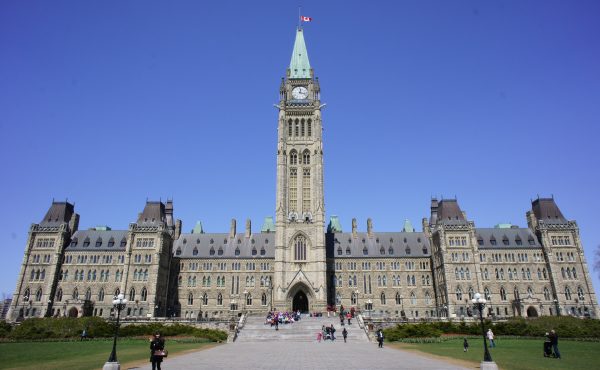

If Unbuilt Toronto chronicler Mark Osbaldeston gets around to penning a third installment of our city’s missed opportunities, Michael van Valkenburgh’s extraordinary vision of a naturalized estuary for the mouth of the Don River will surely have pride of place in those as-yet unwritten pages, if not in the city itself.
After Friday’s briefing by senior waterfront officials, I came away with the distinct sense that the Brooklyn designer’s award-winning plan – the product of an international design competition, extensive public consultation and intense technical and regulatory review – is pretty much dead in the water, so to speak.
Yes, deputy city manager John Livey and Waterfront Toronto CEO John Campbell talked in very general terms about “staging” and alternative financing approaches and still more public consultations (the first session is Dec. 12 at the Toronto Reference Library). But it seemed quite clear from their comments that price and speed will determine Toronto’s port lands development plans from here on in. As Campbell, never one to mince words, put it, “The handcuffs are off.”
Handcuffs, John? C’mon.
I have a lot of time for Campbell and his team at Waterfront Toronto because they dared to dream, yet do so within a framework of common sense, a strong appreciation for the public’s role in the gestation of said visions, and a grounded understanding of the limitations of the private sector’s role in revitalization.
But with the WT now clearly on a short leash, I hope Livey and Campbell understand that without an animating vision for the port lands, Toronto-style expediency will lead invariably to mediocrity, of which we have no shortage.
Consider the rapidly waning enthusiasm for Van Valkenburgh’s estuary, and its $634 million price tag. Lest we forget, that idea emerged from a major re-think of WT’s plan for the open space envisioned for the area south of the mouth of the Don.
Van Valkenburgh, who is no grad school amateur, won WT’s ensuing design competition not just because he offered up the prettiest picture. To get twice the bang for the infrastructure buck, he routed the river mouth/flood plain through the most polluted areas of the port lands, the very parcels that would require huge outlays to remediate. His plan also sought to maximize the amount of highly desirable shoreline property as a way of boosting revenues from land sales.
So when the brothers Ford kvetch about the $634 million outlay for Van Valkenburgh’s strategy, we should always remember that they’re excluding the financial upside of that outlay, which will be considerable and long lasting.
Indeed, like any very large infrastructure project, the ‘investment’ in the Don mouth naturalization will pay dividends long after the debentures have been retired. Curiously, two generations of taxpayers must foot the bill for something that will enrich Toronto for centuries, just as the city’s current residents benefit from earlier investments (Bloor Viaduct, High Park, etc.) that have long been paid off.
Obviously, the Fords don’t understand the concept of paying it forward. So the onus has fallen to Livey and Campbell to deliver quick wins and find new sources of revenue to finance the public realm improvements that will deliver the land value gains. To Livey’s credit, he talked on Friday about development charges and tax increment financing and other funding mechanisms. Waterfront officials should certainly be looking to fast-track more run-of-the-mill development on the eastern, inland regions of the port lands. And the city must redouble its efforts to secure additional financing from the other orders of government, especially for transit, so this vast brownfield zone doesn’t become a patchwork of parking lots.
It will also be interesting to see how waterfront officials, and council itself, responds to public feedback when they embark on consultations next month. I’m guessing the Code Blue TO folks will be out in force, and they’re not going to be banging the drum for large-format malls.
Mainly, the key detail in the go-forward plan that ultimately lands at council next June involves the crucial question of what the city chooses to do with the revenue windfall generated by the accelerated port lands development. If council earmarks those funds to underwrite future public realm investments in the port lands, there’s reason for hope. But if council votes to use that cash to fund short-sighted tax cuts and debt reduction, we will know that this exercise may be little more than a land grab by moneyed interests.
At which point Campbell and his crew at Waterfront Toronto will have traded the handcuffs for a straightjacket.




4 comments
If you could provide some links to the project it would be helpful
Compared to what has happened in Manhattan and Brooklyn along their waterfronts (especially the stunning, amazing, ridiculously good Brooklyn Bridge Park by Van Valkenburgh), Toronto is not doing well. The vision is at least there now, but not the political will or money. Very sad.
Here’s the link to the Don Mouth revitalization on Waterfront Toronto’s website:
http://www.waterfrontoronto.ca/explore_projects2/lower_don_lands/don_mouth_naturalization_and_flood_protection
Why are federal and provincial governments silent? Waterfront Toronto was created by all three levels of government and they all have an economic stake in making sure waterfront development happens the correct way. Toronto needs to follow these plans and stop messing with a good thing. TEDCO No. 2 and Rob Ford need to be smacked in the face.